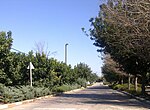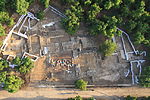Galilee Medical Center
1956 establishments in IsraelAsian hospital stubsBuildings and structures in Northern District (Israel)Hospital buildings completed in 1956Hospitals established in 1956 ... and 3 more
Hospitals in IsraelIsraeli building and structure stubsNahariya

Galilee Medical Center (Hebrew: המרכז הרפואי לגליל, HaMerkaz HaRefu'i LaGalil), abbreviated GMC, is a hospital located in the coastal city of Nahariya and is the second largest hospital in northern Israel (after Rambam Hospital in Haifa). It was established in 1956. The hospital located on the outskirts of Nahariya, three kilometers from the city center, serving half a million residents of the western Galilee, from Karmiel to the coast.
Excerpt from the Wikipedia article Galilee Medical Center (License: CC BY-SA 3.0, Authors, Images).Galilee Medical Center
Sderot HaNasi Ben Zvi, Nahariah Neve Yitzhak Rabin
Geographical coordinates (GPS) Address Phone number Website External links Nearby Places Show on map
Geographical coordinates (GPS)
| Latitude | Longitude |
|---|---|
| N 33.009444444444 ° | E 35.116666666667 ° |
Address
המרכז הרפואי לגליל
Sderot HaNasi Ben Zvi
2221201 Nahariah, Neve Yitzhak Rabin
North District, Israel
Open on Google Maps









